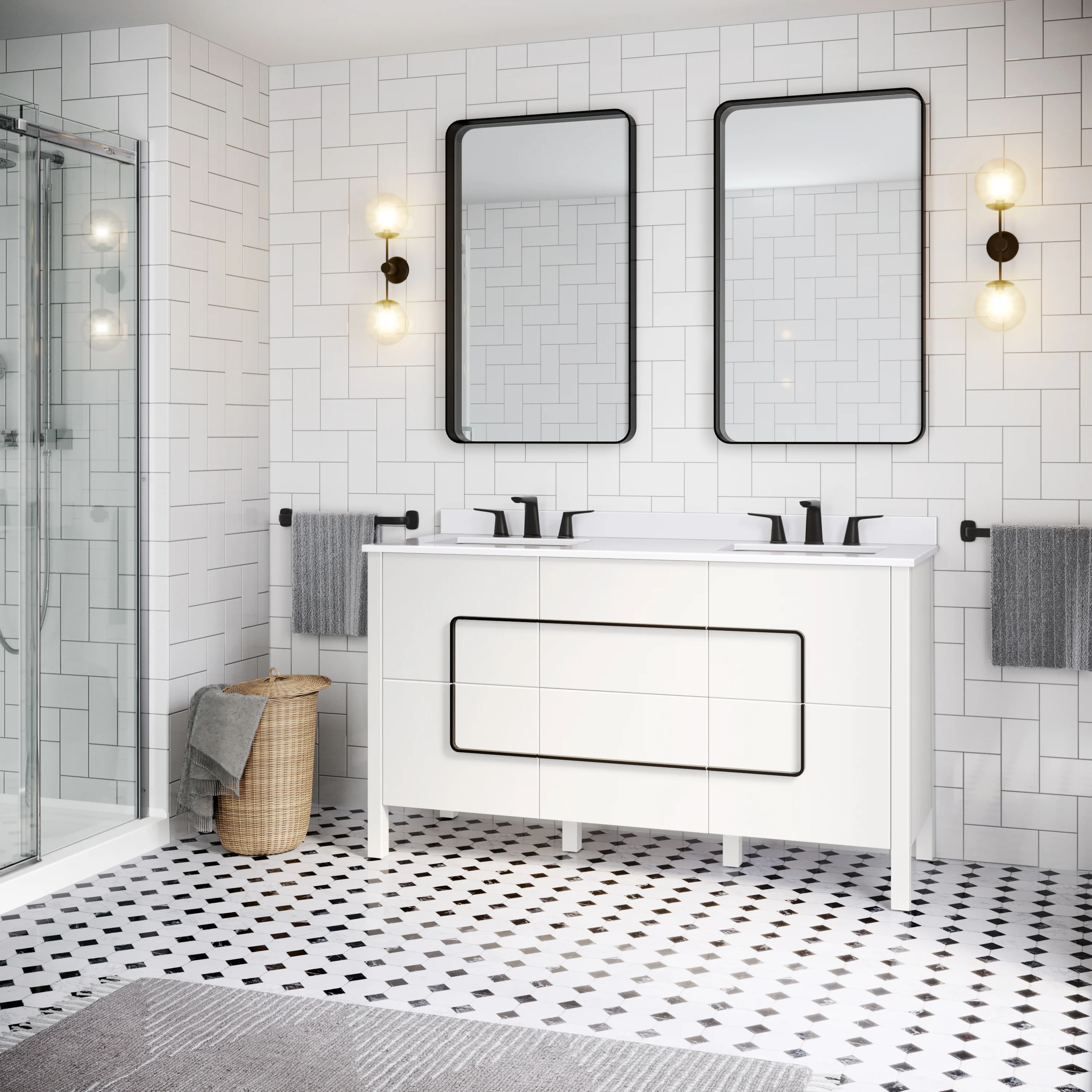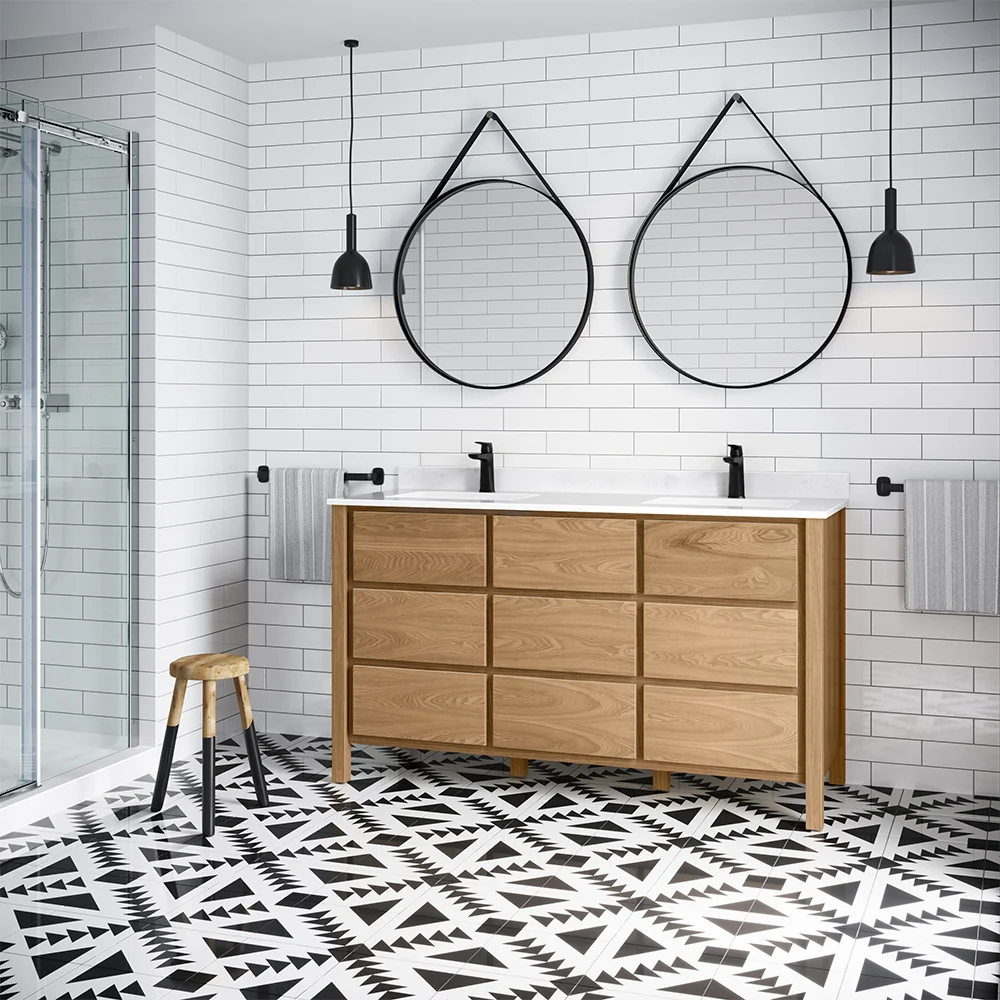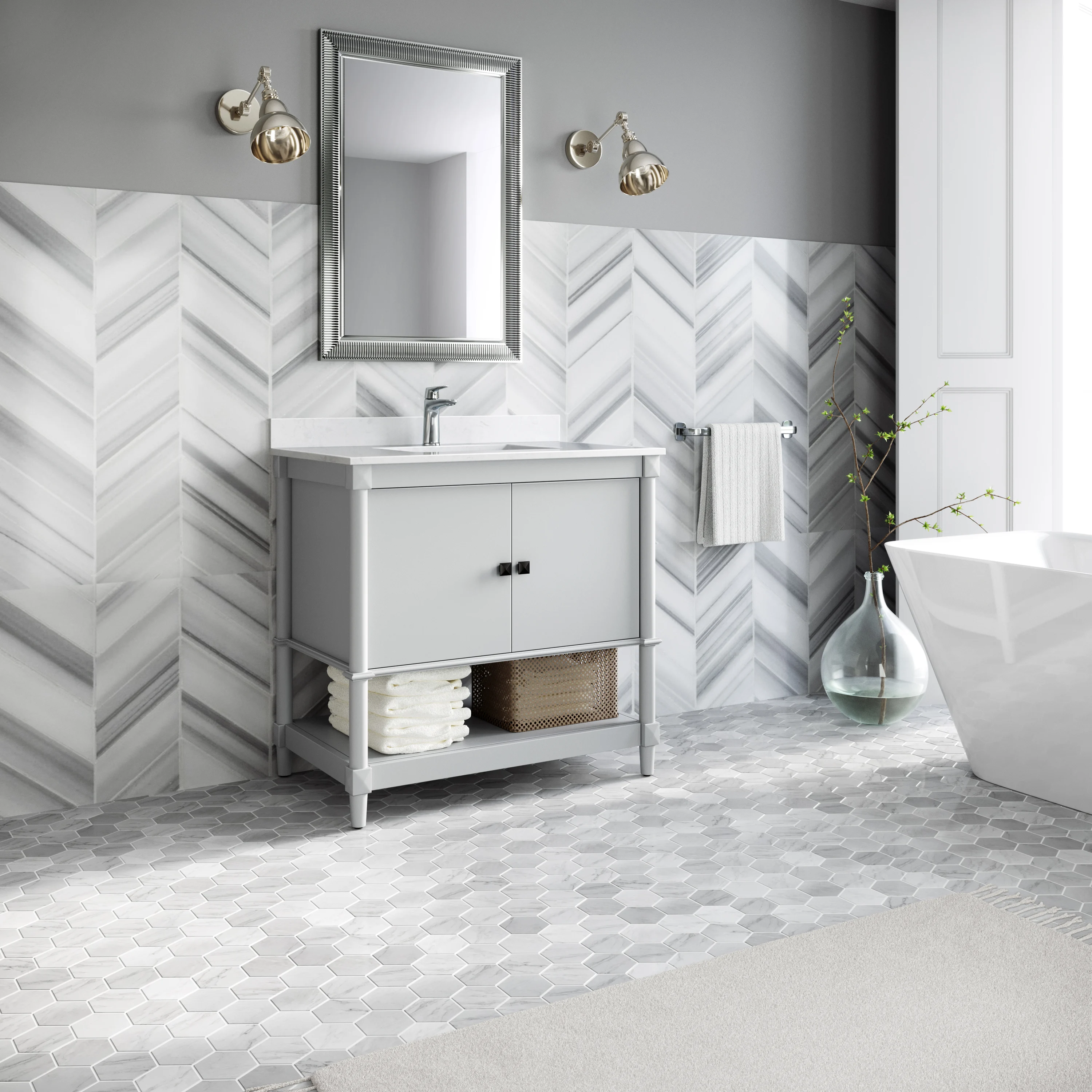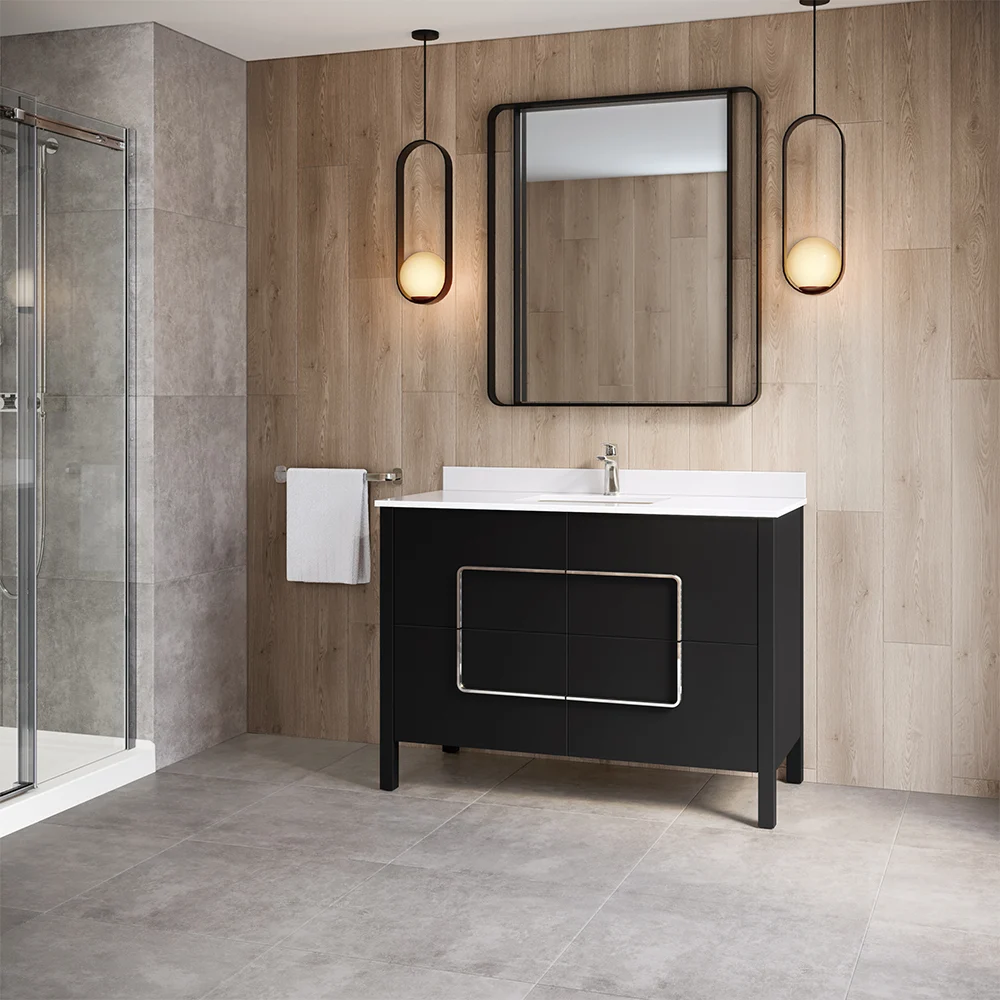Your bathroom vanity serves as the heart of your morning and evening rituals. It’s where you mentally prepare for the day ahead and unwind after a long day. Given its central role in your daily life, selecting the right vanity is crucial. It’s not just about functionality; it’s about creating a space that feels both practical and inspiring. Whether you're designing a guest bath or a master suite, here are some essential factors to keep in mind when choosing a bathroom vanity. Start by evaluating the layout of your bathroom. Measure the available floor space and take note of key features such as plumbing fixtures, electrical outlets, and mirrors. Visualize how people will move through the room and ensure there’s enough clearance for doors and drawers. This step will help you determine whether a larger vanity or a compact option would work best. The type of vanity you choose depends largely on who will use it and for what purposes. For instance, a powder room may only require a basic pedestal sink, whereas a shared bathroom might benefit from dual sinks. If the vanity will be used by multiple people, consider adding extra storage for toiletries and grooming tools. In contrast, a single-user setup could prioritize aesthetics over function. Frederick York 36″ Tiana Vanity Dove Grey Matte Black Once you’ve mapped out the room, break out the measuring tape to establish precise measurements for your vanity. Focus on height, width, and depth to ensure everything fits perfectly. A standard vanity height ranges from 30 to 32 inches, though 36 inches is becoming increasingly popular due to ergonomic considerations. Mirror placement and cabinet height should also guide your decision-making process. The width determines whether your vanity will house one or two sinks. Dual sinks offer greater convenience in shared spaces, providing ample room for two users simultaneously. Single sinks, however, make better use of limited square footage.
Standard depth measures around 21 inches, but narrower options exist if space constraints dictate. Some models extend only 12 inches deep to accommodate tight quarters. Frederick York 48″ Drexel Vanity Black Brushed Nickel With the technical aspects sorted, it's time to focus on aesthetics. There are three main styles to consider: freestanding, floating, and corner. Freestanding vanities remain the most traditional option, offering versatility across various interior themes. Floating vanities deliver a contemporary feel by eliminating bulky legs and creating an open feel under the counter. Corner vanities maximize small spaces by fitting neatly into unused corners. Adding personal touches can elevate your vanity into something truly special. Opt for minimalist designs featuring clean lines and neutral tones, or experiment with bold colors and textures. Hardware choices play a significant role in defining the overall vibe—whether you prefer polished chrome, brushed nickel, or rustic brass. Your vanity doesn't just serve functional purposes; it reflects your lifestyle and tastes. By asking the right questions and prioritizing both form and function, you'll discover the perfect vanity that complements your home and enhances your daily routine. Need assistance finding the ideal vanity for your bathroom? Schedule a consultation with our experts at Kitchen and Bath Classics today! Wuxi Ding Guohua Hand drawn Wallpaper Co., Ltd , https://www.silkwallpaperasia.comChoosing the Perfect Bathroom Vanity: Key Considerations


Assessing Your Space
Understanding Your Needs

Defining Dimensions
Height
Width
Depth

Selecting a Stylish Design
What To Consider When Choosing Your Bathroom Vanity
Wuxi Ding Guohua Hand drawn Wallpaper Co., Ltd , https://www.silkwallpaperasia.com
August 20, 2019
 Explore More Articles
Explore More Articles